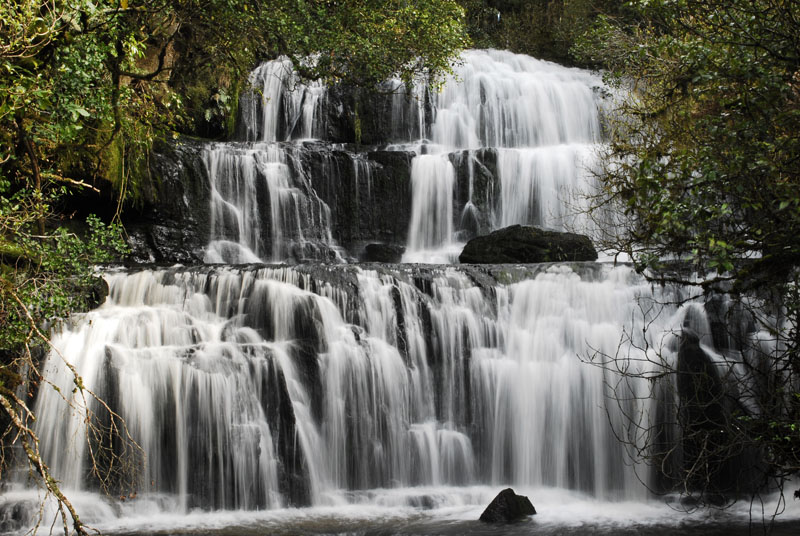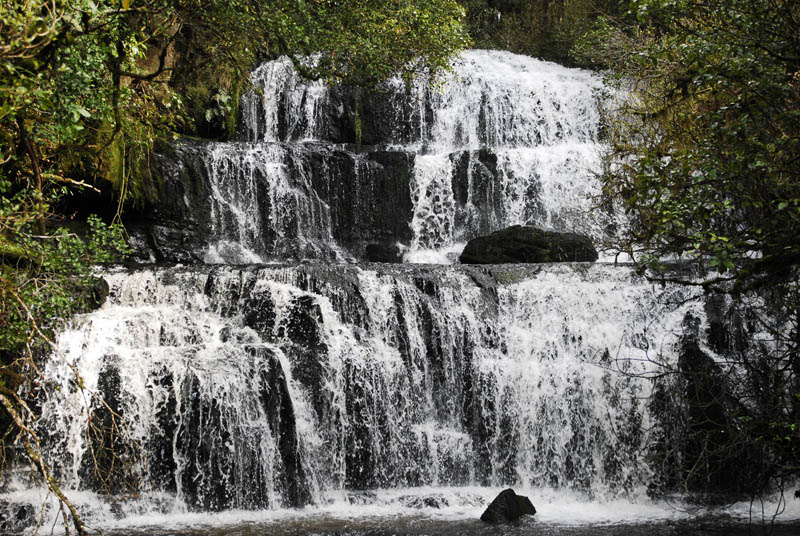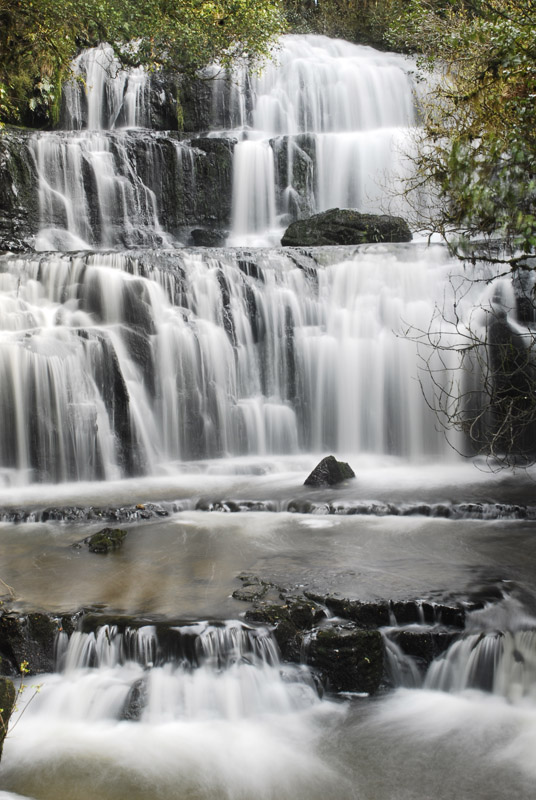MatthewRoberts wrote:I love these effects.. can you please explain to a newbie how each style is acheived. Ta!
Briefly, The first and third use a slow shutter speed so that the motion of the water is blurred. The second uses a fast shutter speed to stop the motion
In more detail, I dropped ISO down to 100ASA and used a polariser and a small aperture to reduce the light coming into the camera. This forced me to use a slow shutter (0.25 for #1, 2.5s for #3) to get the exposure correct. A tripod is essential of course. I would have used a neutral density (ND) filter as well to slow the shutter even more, but I don't have one to fit my current lenses. A neutral density filter is simply a piece of dark grey (NOT coloured!) glass. A polariser fits this description well enough and can be used at a pinch.
In the distant past, using very dark ND filters, I used to take photos of roads using exposures lasting several minutes. When developed (I did say distant past), the photos showed the road, but no cars, simply because the road was there all the time, but no car was there long enough to show up on the film.
For #2, I wanted speed, so I took off the Pol, opened up the aperture and increased the ISO (I think - I am not at my computer and can't check all the EXIF.) Shutter speed was 1/250s to freeze the motion of the water. I still used the tripod as I didn't want any camera shake. I also used delay shutter so there was no vibration from the mirror.





